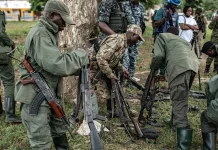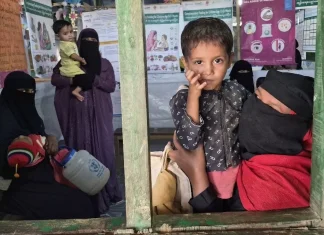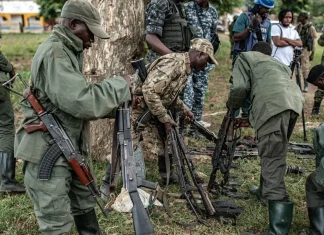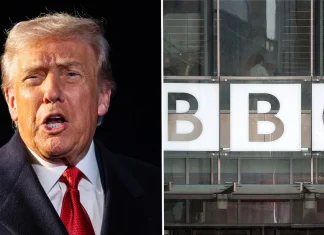
On the Brink of Peace or a Precarious Gamble? Inside Trump and Putin’s High-Stakes Alaska Summit
As the world watches breathlessly, an electric mix of hope and skepticism fills the air. This coming Friday, in the icy embrace of Alaska, US President Donald Trump and Russian President Vladimir Putin will sit across the table in a meeting that could redefine the trajectory of the devastating war in Ukraine. It’s a summit cloaked in uncertainty, its stakes monumental—not just for Kyiv and Moscow, but for global peace and the fragile webs of international diplomacy.
Setting the Stage: A World Waiting with Bated Breath
Since February 2022, Ukraine has been caught in the throes of the deadliest conflict in Europe since World War II. When Putin launched his unrelenting invasion, he aimed to redraw maps and spheres of influence, shattering lives and displacing millions. To date, the human toll climbs relentlessly—over 7,000 civilian deaths confirmed by the UN, with cities reduced to rubble and families scattered. Against this backdrop, each diplomatic move carries vast weight.
President Trump’s forthcoming meeting with Putin is seen through vastly different lenses. For some, it’s a beacon of possible peace. For others, a perilous gambit that risks sacrificing Ukrainian sovereignty.
The Proposal on the Table: Land Swaps and Ceasefires
In a candid White House press briefing, Trump signaled a readiness to explore “land swapping” as a cornerstone of any peace deal. “Both Kyiv and Moscow will have to give up some territory” he said, suggesting that neither side can expect to walk away unscathed.
This notion is not new, but deeply controversial. For Ukrainians, land is more than soil—it represents their identity, culture, and freedom. President Volodymyr Zelensky remains resolute: “Concessions do not persuade a killer,” he stressed on social media, warning that rewarding aggression might only fuel further violence. The Ukrainian leader is mobilizing allies beyond Europe—engaging India and Saudi Arabia—to build a broader coalition in support of Kyiv’s sovereignty.
European voices echo this caution. Kaja Kallas, a key European Union foreign policy figure, emphasized the need for unified transatlantic pressure on Russia to “ensure future Russian aggression is stopped.” She also reaffirmed the EU’s commitment to ramping up sanctions, boosting military aid, and backing Ukraine’s aspirational accession to the EU.
A Moment of Truth in Alaska
Trump described the meeting as “a feel-out session.” His words were frank, “I’ll know in the first two minutes if there’s any chance of making a deal.” The raw simplicity of that statement captures the fragile dance of diplomacy, where decades of mistrust and conflicting narratives will collide in hours—not weeks.
He plans to press Putin hard: “You’ve got to end this war,” Trump declared. Yet, his indecision remains palpable. “I may leave and say, ‘Good luck,’” he admitted, acknowledging that failure is a clear possibility.
The shadow of this unpredictability unsettles Europe. Berlin is preparing a high-level video conference this week, with EU and NATO officials joining Ukraine’s leadership to discuss how to maintain a steady course amid potential shifts in US policy. Germany’s Chancellor called for “continued solidarity and firmness” with Ukraine, wary of any premature concessions that undermine Kyiv’s position.
Behind the Scenes: A Global Chessboard
While the Alaska talks dominate headlines, the broader diplomatic chess game unfolds quietly yet intensely. Putin has been busy, too—engaging with China, India, Brazil, and several ex-Soviet states, briefing them on his recent US contacts and perhaps seeking to consolidate a support bloc or at least hedge against isolation.
This global engagement underlines how Ukraine’s conflict is much more than European; it is a fulcrum upon which great power competition pivots. It raises profound questions about alliances, spheres of influence, and the future rules that govern international order.
“The world’s eyes aren’t just on Alaska—they’re on the larger strategic game around it,” notes Dr. Elena Morozova, an expert on Eurasian geopolitics. “The summit could mark a turning point, but whether it presses toward peace or simply resets tensions depends on far more than the handshake.”
The Human Cost: Stories from the Frontlines
Meanwhile, in towns scarred by war, the human toll simmers beneath political debates. In Mariupol, a once-bustling port city turned ghost town, locals speak of shattered homes, burnt-out garages, and relentless drone strikes that echo long after the skies clear. Kateryna, a schoolteacher who has taken refuge in a nearby village, shares quietly, “We want peace, but not peace built on losing our homes—on losing our dignity.”
Her sentiment resonates with many Ukrainians, who fear that talk of territorial trade-offs could betray the sacrifices of millions.
What Lies Ahead: Questions Without Easy Answers
As Trump and Putin prepare to meet, the world is left wrestling with difficult questions.
- Can true peace emerge from territorial concessions made under fire?
- Will international sanctions and military support be sustained long enough to bring Russia to the negotiating table without rewarding aggression?
- How will the global community balance realpolitik with principles of national sovereignty and human rights?
These are not abstract dilemmas. They ripple through every embassy in Europe, every displaced Ukrainian family, and every policymaker agonizing over the future.
Invitation to Reflect: The Ripple Effects of Conflict and Diplomacy
For a global audience, this moment offers a stark reflection on how interconnected our world truly is. From the frost-laden corridors of Alaska’s summit hall to the wounded streets of Kyiv and beyond, the war in Ukraine tests the limits of diplomacy, morality, and endurance.
Are we willing to accept compromises born from conflict? How do we weigh the scales between pragmatic peace and justice, between the urgency to end suffering and the risk of emboldening future aggression?
As readers, we must look beyond headlines and soundbites—to listen to voices, gauge the nuanced realities, and engage deeply with the complexities of peace. Because in a conflict this vast and painful, no simple solution will ever suffice.
Final Thoughts: The Alaska Summit’s Unwritten Chapter
Come Friday, when Trump and Putin face one another, history will hold its breath. Perhaps it will be a prologue to peace, marked by bold steps toward resolution. Or maybe, it will be a stalemate, casting long shadows that warn of future unrest.
What we do know is that the world must watch, listen, and act—not just for Ukraine, but for the fragile promises of diplomacy everywhere.
As the smoke from the battlefields mingles with the hopes of negotiators, one question rises above all: In the quest for peace, what are we truly willing to sacrifice?









